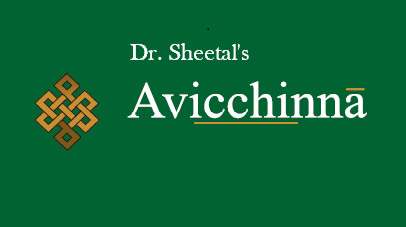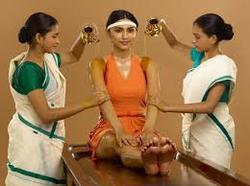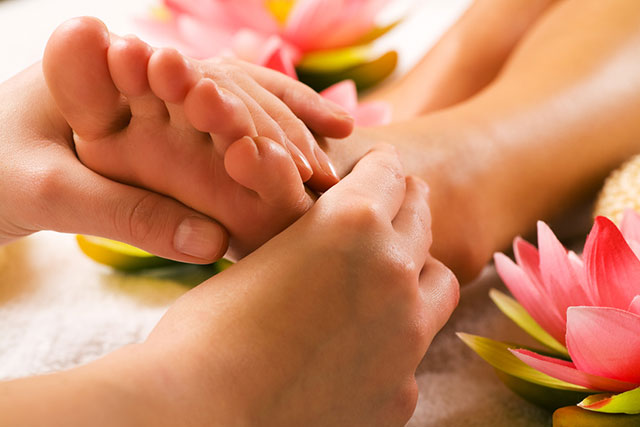Nadi Pareekshan
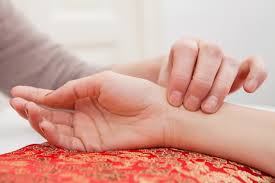
According to Ayurveda, the presence of disease in our system
indicates an imbalance in our ‘doshas’. Bringing our system back
into balance is the key to the cure. Ayurveda has an effective tool
for the diagnosis of disease called ‘nadi pareekshan’ or pulse
diagnosis. This is done by an Ayurvedic doctor who checks the
individual’s pulse on his/her wrist and he/she can easily detect
the imbalances in the body and prescribe an effective
treatment.
Treatments usually come in one of two forms:
- Herbal medicines to balance the body.
- Panchakarma, a 5-staged body purification programme, consisting of herbal remedies, light diet and excercise specific massages and cleansing treatments.
Ayurveda supports health without disturbing the natural intelligence of the body; Ayurvedic treatments have no negative side effects. Because of this, people around the world are now turning to the ancient science of Ayurveda to help them regain and maintain optimal health. Ayurveda can be used on its own or as a complement to allopathic treatment.
Shirodhara
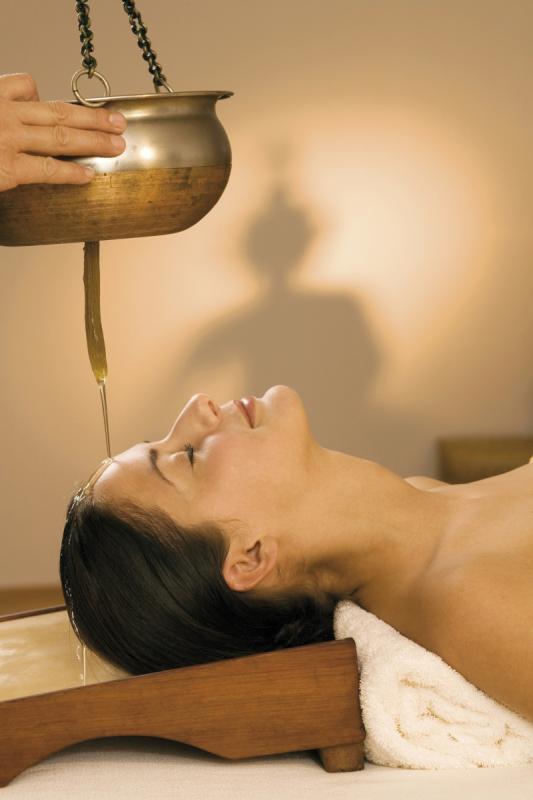
Shirodhara is a form of Ayurveda therapy that involves gently pouring liquids over the forehead and can be one of the steps involved in Panchakarma. The name comes from the Sanskrit words shiro (head) and dhara (flow).
According to traditional texts (Astanga Hrdaya: Sutra 2:7-8), this Shirodhara technique, if done correctly and accordingly, is known to accomplish miraculous healing. Some are listed here:
• Mesmerizing and tantalizing effects
• Treatment of several diseases connected with the head, neck,
eyes, ears, nose, throat
• Helpful against insomnia
• For nervous disorders and dispositions
• Helps relieve tension headaches
• Reduces shoulder and neck pains
• Prevention of premature graying of hair
• Increases luster and form of hair and more
Abhyangam
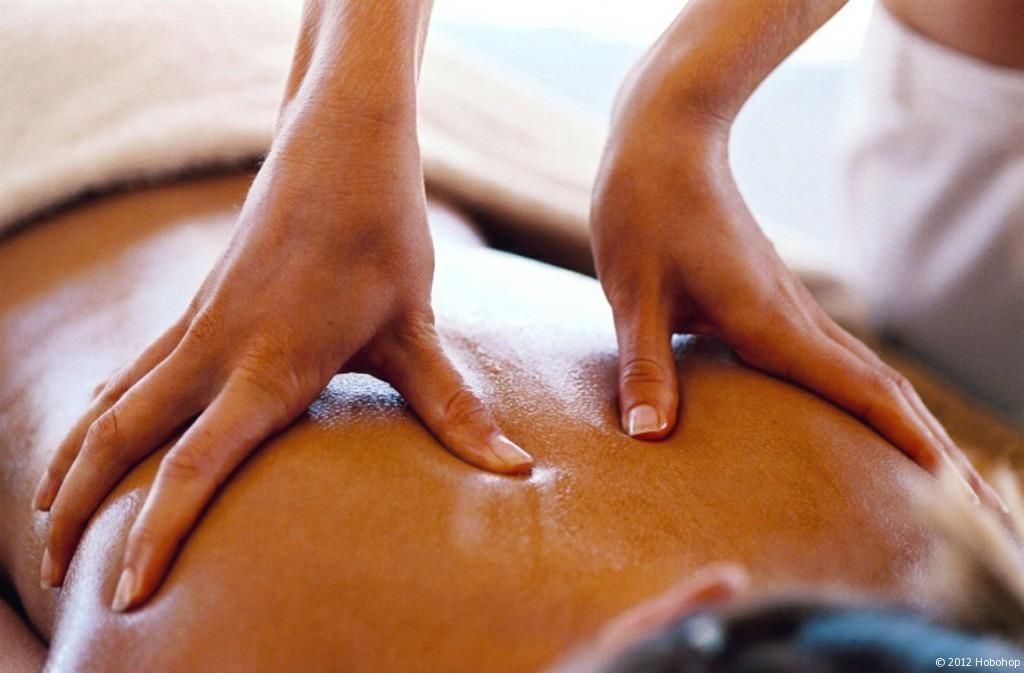
Well trained Panchkarma assistant apply medicated oils all over
the body in a specific manner. Swedan (Fomentation) usually follows
all types of massages. This abhayangam is indicated in various
diseases of the muscles and the nerves and as a process of making
the body physically strong and healthy.
Benefits: Counterbalances the body and the spirit by offering
mental balance. It gives an unprecedented rejuvenation.
Swedan:
In this process a steam chamber is used, in which the patient either sit or lie down on his back and every part of the body is exposed to the steam except head, to avoid dehydration, the patient is given a glass of water before administering swedan. The duration of treatment is five to fifteen minutes or until sweat begins to bead on the face and forehead.
The sign of effective and complete swedan is sweating, a reddish color to the skin and warmth in the body, with no chill and stiffness. Patient feels light because of liquefying “Ama” (toxin). Without swedan toxins would not be ready for complete disposal. Once the Dhatus give up their accumulated toxins and wastes and the Doshas successfully transported them back to the gastrointestinal tract, the body must eliminate these wastes through the closest orifice.
This therapy is useful to liquefy the toxins in the body, and generalized disease like Arthritis and generalized weakness, Fatigue, Muscular problems; and in Myopathies swedan can be use as treatment.
Basti
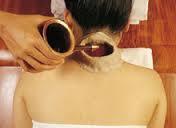
Greeva Basti
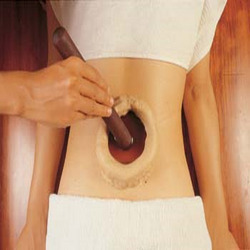
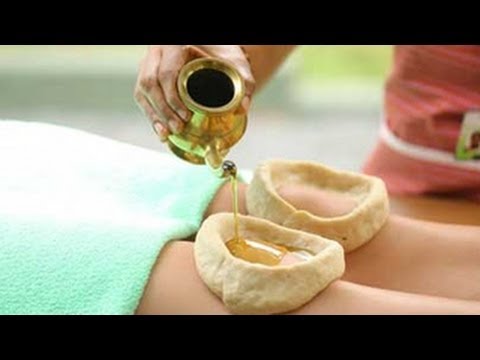
Kati Basti
Janu Basti
Udvartana
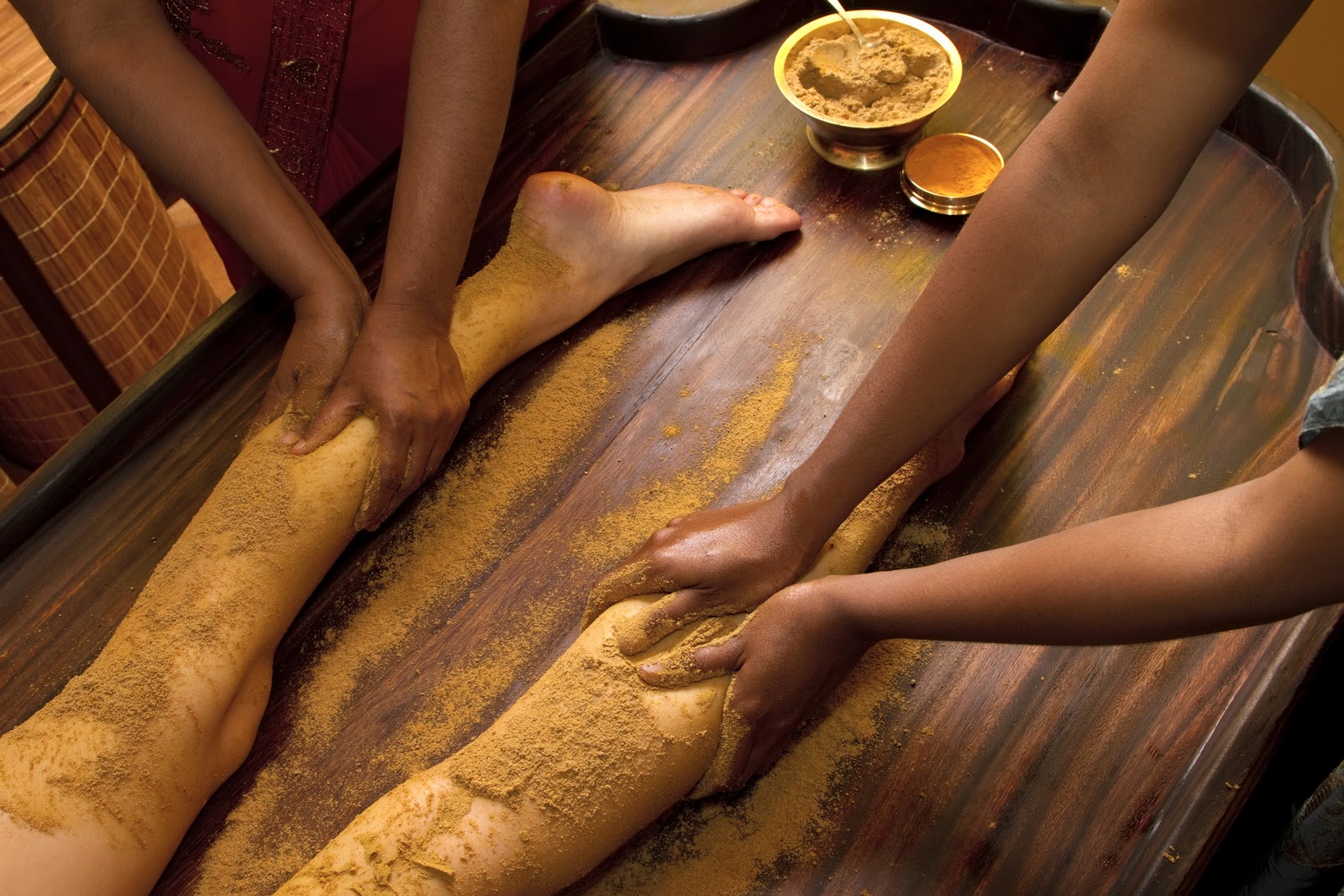
Pinda Swedan
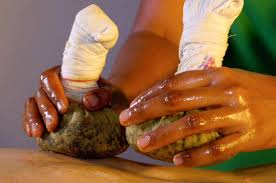
The procedure of applying heat to the sacral or lumber region, Knee, back of the neck by retaining warm medicated oil with in a specially formed frame on this area is popularly know by the Kati basti, Janu basti and Greeva basti respectively.
Benefits of Kati basti, Janu basti and Greeva basti:
- Lumbar spondylosis.
- Spondylolisthesis.
- Disc prolapse.
- Ankylosing spondilitis.
- Rheumatoid arthritis.
- Sacroileitis.
- Lumbosacral strain
- Cervical spodylosis.
- Stiffness of neck.
- Osteoporosis.
- Osteoarthritis
Udvartana is an invigorating procedure done with cleansing grains or constitution specific herbs, used to scrub and exfoliate the skin. This herbal massage will stimulate the skin, leaving you with radiant, toned skin and cleansed skin.
Udvartanas have traditionally been used to treat the following ailments:
- Clogged pores or acne on the posterior surface of the body (backside)
- Sluggish lymphatic systems
- For the removal of toxins
- Used to slough dead and dying skin for a more even skin tone
- Weight gain and obesity
- Cellulite
In this process the whole body (or any specific part) is made to perspire. This is done by external application of medicinal boluses, which are tied in a cloth bag (pottali/ pinda). Its helps to cure Paralysis, Poliomyelitis, Pain, Osteo arthritis, Rheumatoid arthritis, etc. Benefits:
-
Improves blood supply by cleansing the channels of circulation
-
Removes metabolic waste
-
Promotes digestion
-
Restores vigor
-
Gives softness to the body by improving the health of the skin
-
Endows sound sleep
-
Makes the body strong and sturdy with well developed musculatures
-
Nourishes the body and increases immunity
-
Promotes sharpness of vision and functions of other sense organs
-
Effective in curing diseases of the nervous system and others such as chronic rheumatism, osteoarthritis, gout, emaciation of muscles, numbness and diseases caused by vitiation of blood.
-
Slows down aging, premature graying of hair, baldness, appearance of wrinkles over the body and other ailments caused by aging.
